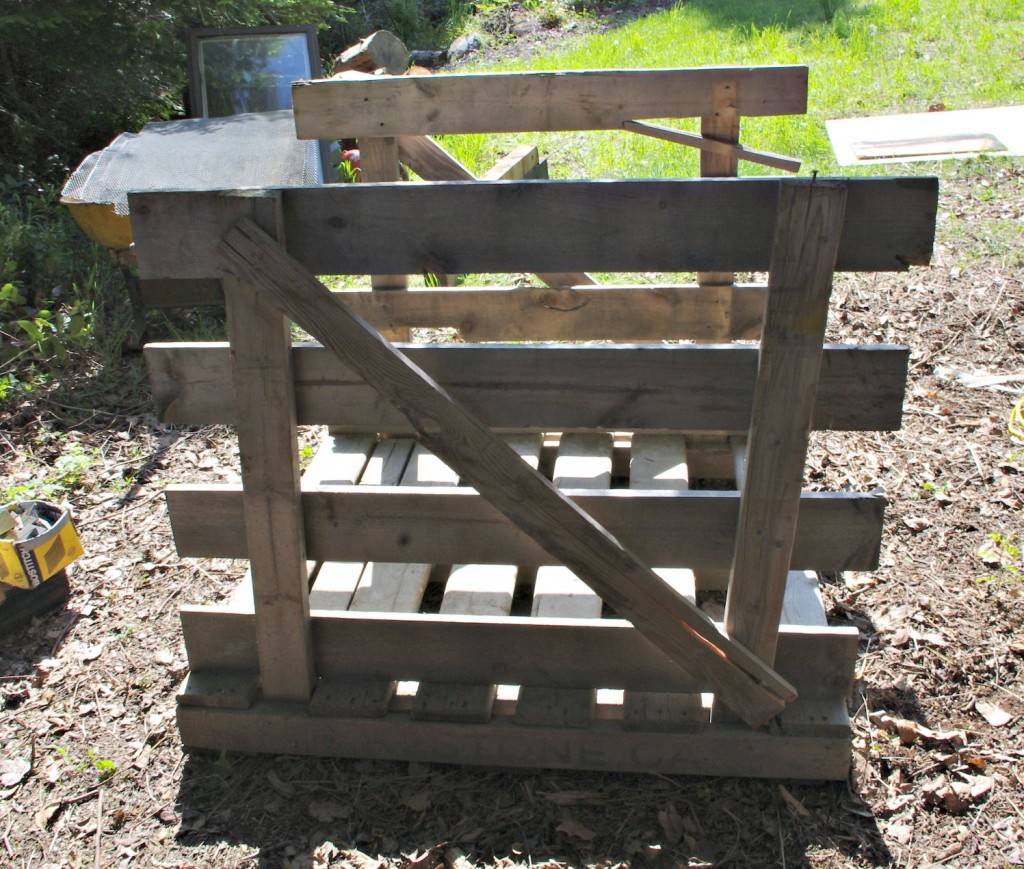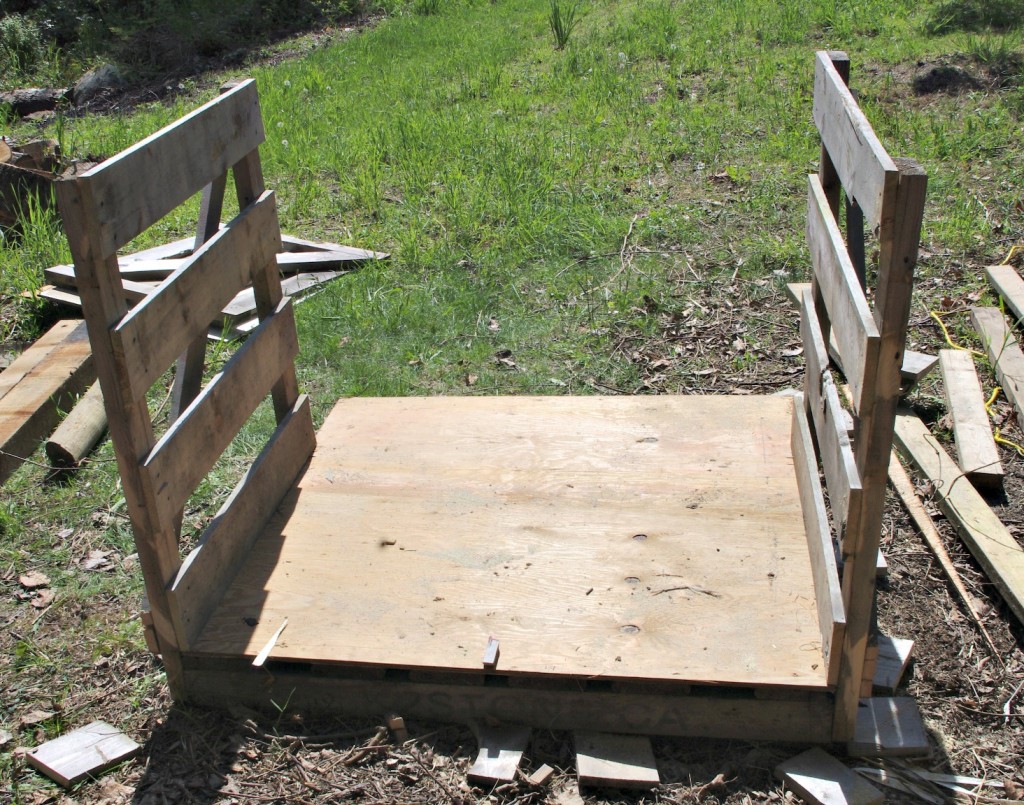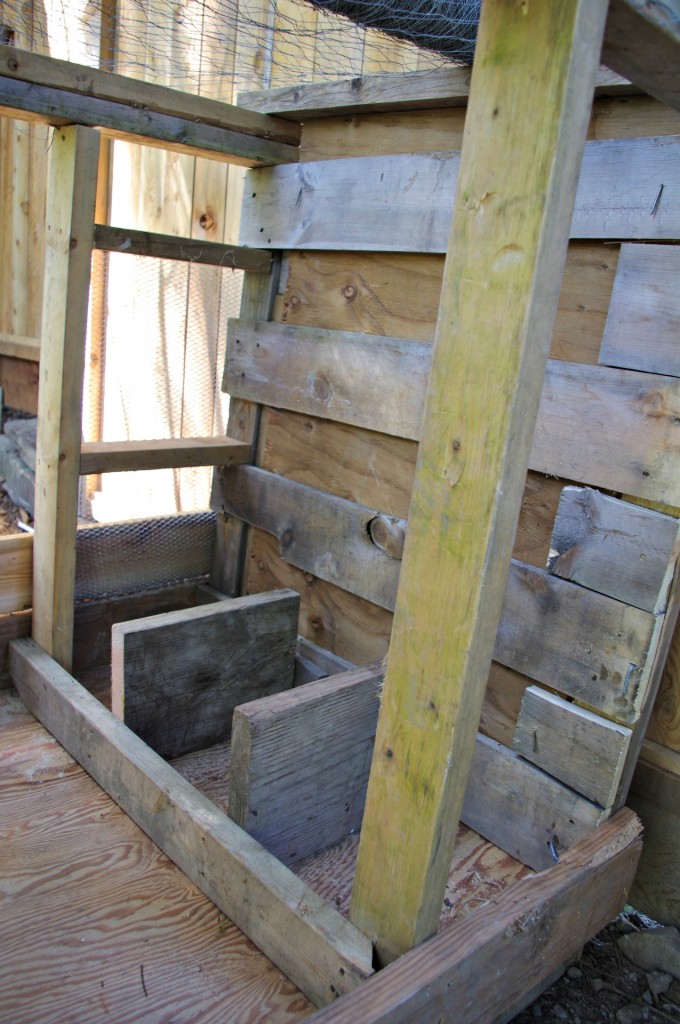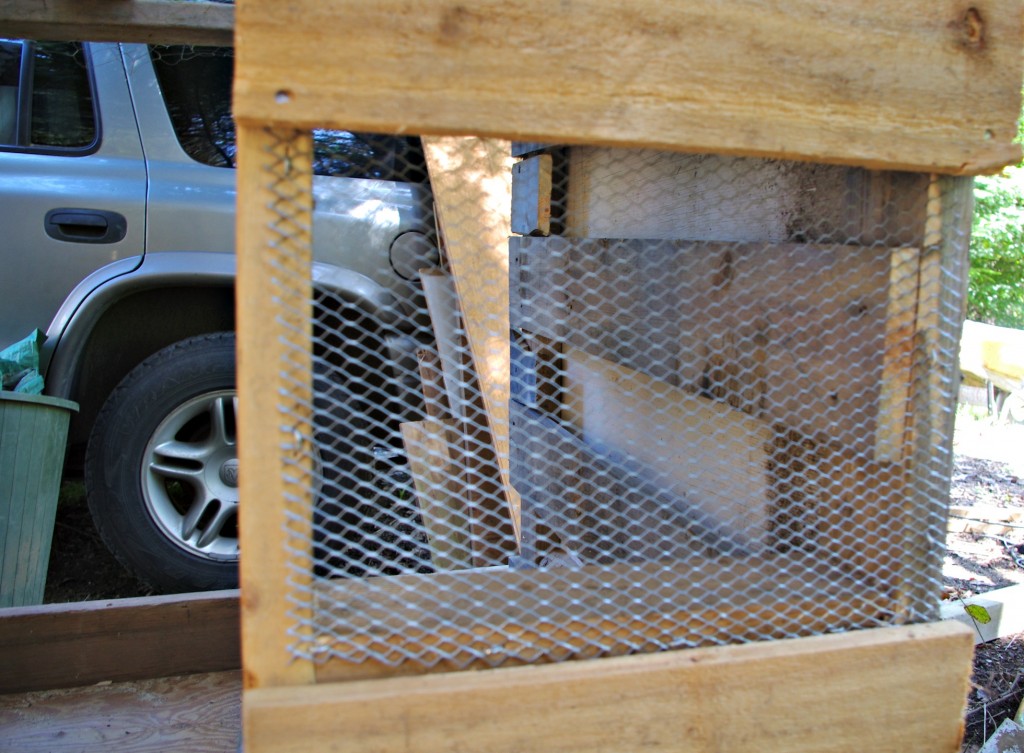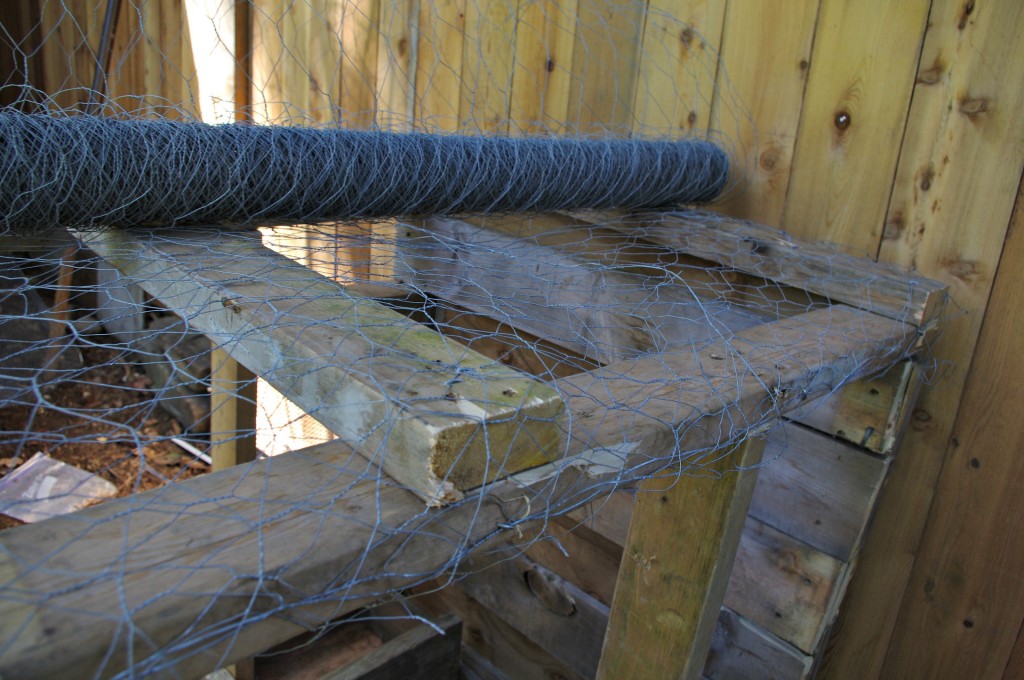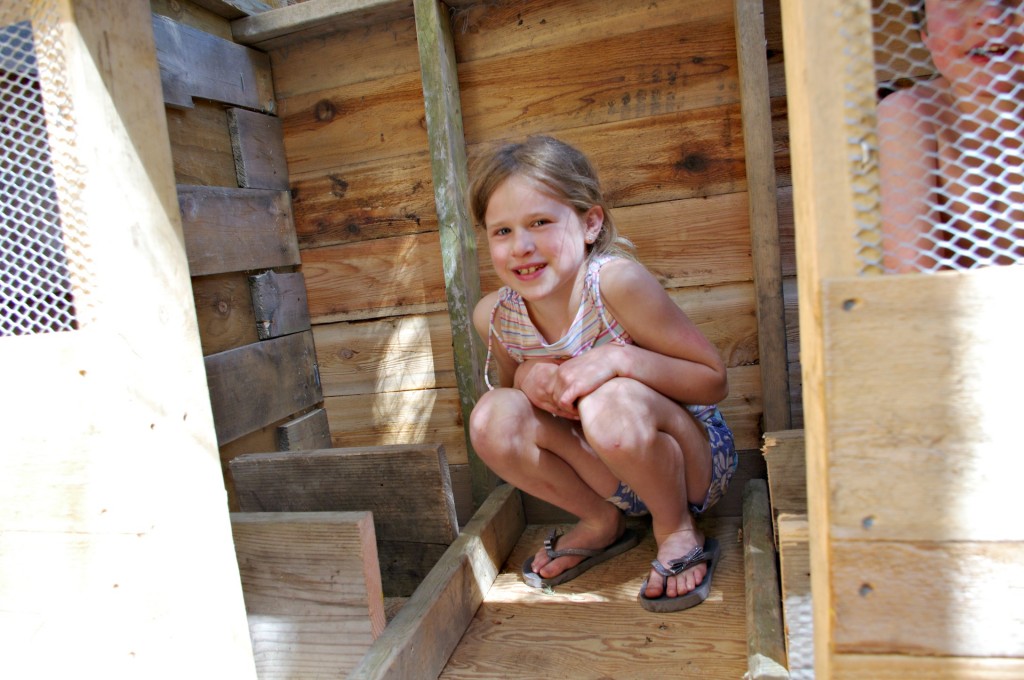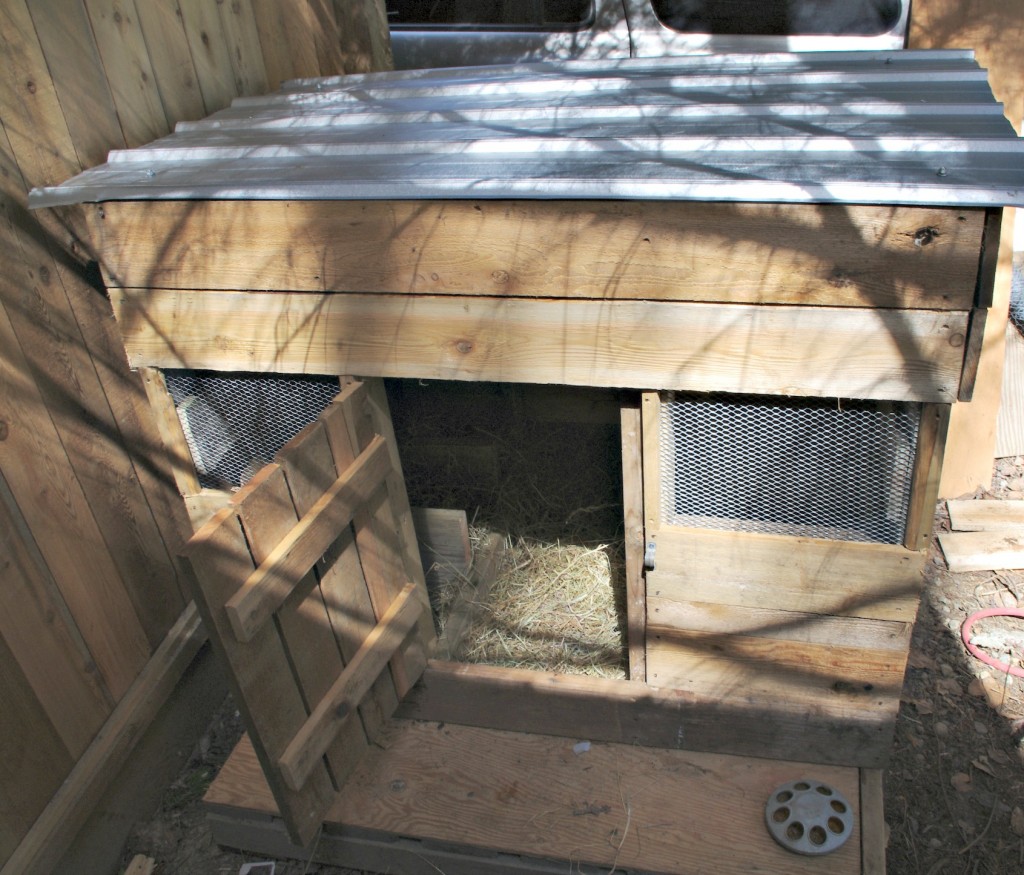As mentioned last week, there is definitely spring in the air since we have had 6 hens go down broody in the last two weeks.
Our chicken set up is that everyone shares a main coop, so when broody’s pop up they not only dominate the nesting boxes, but it is also a pain to collect the fresh eggs. For the time we have broodies in there I am always worried I will crack open an egg and find a partially formed chick inside. . .
Kinda turns a gal off of eating eggs.
We already have one momma hen and her 4 chicks in our previous broody house, and time was ticking to build another before the new eggs hatched.
Hubby had upcycled our last broody house from an old pallet, but he has more time that day. . . and wasn’t being forced into the build by his wife!
We had an extra rock pallet lying around and decided to use the same method for the new broody spot, expect this time we needed a “barracks” of sorts, so we could pop all the broodies in there at once.
We pulled the sides and back off the pallet base and then covered the bottom with a thin sheet of leftover plywood. The sides were then re-attached, and set BACK on the base of the coop – this allows for a little “porch” for the kids to sit on when playing with the chicks.
We used the “barracks” to brace the back and create the stability for the frame. Our other coop had a full back swing door, but with this being a quick job, and by planning on a larger front door, we kept it simple by just using cedar boards across the back.
We did two posts in the back and two at the front to frame out the little broody boxes. We weren’t sure if the chickens would be “cool” with being able to see their neighbour, but we thought it worth a try and better for socializing the chicks later on.
A back support was attached for added support, and then the broody boxes were framed in with off cuts of wood.
We are all about safety with our flock, especially after having lost 6 ducks to a mink one night – is squeezed in through a small hole on the coop door. Hubby had some HARDWIRE cloth that had been left over from a construction site, and this was the perfect solution to the windows.
We always include some sort of window for our coops- both for ventilation and natural light. We framed in the windows from the broody box posts and then meshed over the front. Small fencing nails were used to secure the wire.
On the top we used old chicken wire- it was a bit big (i.e.” a mink COULD squeeze in) and since we were using metal sheeting on the roof we did 4 layers of the wire to attempt to reduce any mink access. This was attached to the top frame with one additional centre beam being added for support front and back.
The sheeting will just sit directly over this.
It may seem “small” but trust me- if it can fit an 8 year old and a 4 year old, we can get a few broody hens in there. Once the eggs hatch and/or the chickens have recommitted themselves to their nests after the move, we will provide them an outside area to forage.
You can see how we finished the back here as well – simple cedar fence boards, leftover from a fence we had built, just nailed across the back.
We finished the front in the same way – cedar cut offs trimmed to fit, and a simple panel door attached with two left over hinges and a slide lock. The kids stuffed the hay in and we slowly moved our broodies.
It took them the afternoon to settle and figure out where they wanted to sit. We provided them with food and water, and everyone was settled by evening.
There was the odd “scruffle” as they asserted their dominance again. By morning we had 4 out of the 6 re-commit to their eggs. Two may have broken their brood (but honestly, that is JUST fine with me)
If the other two aren’t back on their eggs this afternoon, we will re-incorporate them to the main coop.
This was our solution to having so many broody hens, and wanting them to naturally go through the process safely. If we had let them hatch in the main coop, with the boxes a few feet off the floor, the odds would have been high that the chicks would have fallen following mom out of the box, or been harassed by the other hens.
This will be a safe place for these moms to hatch and raise their chicks, while still being near enough to the flock to gradually introduce them.

